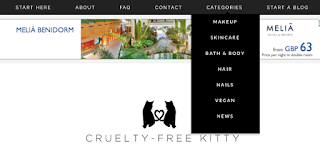ANIMAL TESTING IS CRUELER THAN YOU THINK.
The animals used in experiments are not only confined to small cages and inhumane conditions, but they’re also subjected to tests that are beyond cruel. They’re tortured, maimed, blinded, and even killed. They live a life of suffering and know nothing but fear.
TECHNOLOGY BROUGHT BETTER ALTERNATIVES TO ANIMAL TESTING.
Some companies try to tell us that animal testing serves a purpose: tests are being performed on animals to make sure that ingredients and products are safe enough for humans. The truth is there are alternatives to animal testing for ingredient safety. For example, many companies choose to use in vitro testing, which has many advantages over animal testing. There are also cultured cell tissues as well as computer models.
3. ANIMAL TESTING FOR COSMETICS IS SIMPLY UNNECESSARY.
To formulate their products, companies can choose from a list of over 7,000 ingredients that are already proven to be safe. This just proves that they don’t need to test more ingredients on animals. The only companies that choose to test more ingredients on animals do so because they want to come up with new, innovative ingredients to increase their profits.
LABORARY ANIMALS ARE ANIMALS TOO.
According to the law, laboratory animals form a special category of animals and aren’t protected from animal abuse and cruelty. This view is completely unethical and nonsensical. We protect pets from abuse, but laboratory bunnies, mice, dogs, cats, and other animals don’t have the same rights. Lab animals are animals too and should be protected from cruel treatment.
CATS AND DOGS ARE BEING USED IN ANIMAL EXPERIMENTS.
This wasn’t a typo. Cats and dogs are commonly used in medical animal experiments. Based on statistics from 2013, 67,772 dogs and 24,221 cats were used in animal testing in the United States alone that year. In terms of dog breeds, a shockingly large number of Beagles are used, because of their docile nature. These animals are treated like laboratory animals and are deprived of the basic rights we allow our pets.
YOU CAN VOTE WITH YOUR MONEY.
By supporting cruelty-free companies instead of the ones who choose to test on animals, you’re sending the whole industry a message in the only language they speak: money. They know that they won’t be getting your business unless they stop testing on animals. If enough consumers boycott companies that test on animals, we can truly make a change and influence more companies to go cruelty-free.
THOUSANDS OF GREAT BRANDS ARE CRUELTY-FREE.
There are thousands of cruelty-free brands available today. Gone are the days when choosing cruelty-free products meant only purchasing patchouli lotion from a small, local shop. We can still support all the great independent businesses, but a lot of mainstream big-name brands have now gone cruelty-free. You’re not really limiting yourself that much by making the switch, since so many great brands are cruelty-free.
GOVERNMENTS WORLDWIDE ARE BANNING ANIMAL TESTING.
Many counties have already banned animal testing for cosmetics on finished products and ingredients. The European Union, Isreal, India, Norway, Switzerland, South Korea, and New Zealand have all banned animal testing. So many governments across the world banning this practice should tell us how harmful and unethical it really is.
BEING MORE CONSCIOUS AND BUYING LESS = LESS WASTE.
Going cruelty-free is also a great excuse to give more thought to your purchases and have more of a minimalistic approach. By only buying the items we need (or by buying less of the crap we don’t need!), we’re also minimizing waste and doing our little part to be more conscious, and less wasteful of our resources.




No comments:
Post a Comment